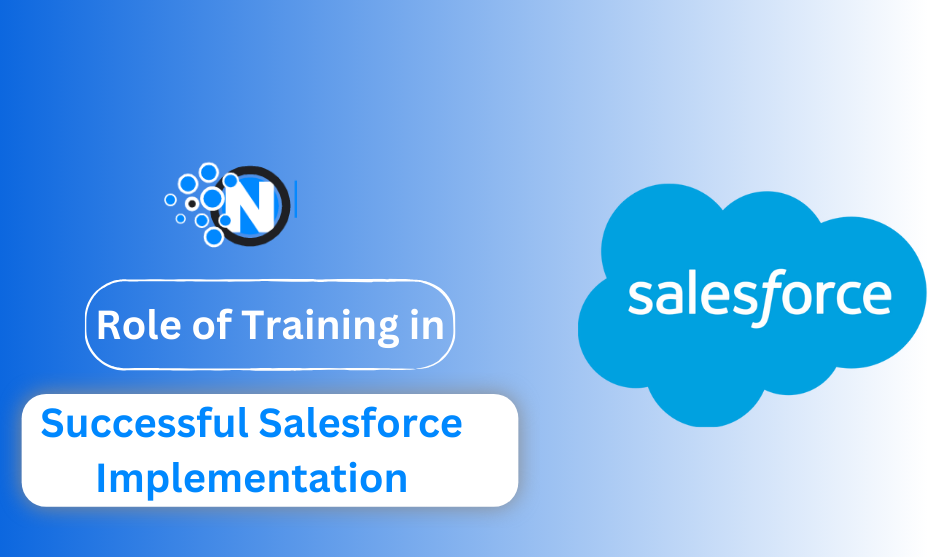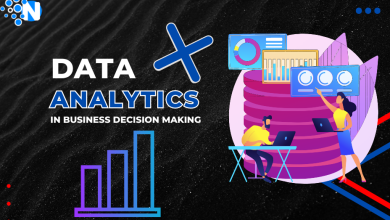The Role of Training in a Successful Salesforce Implementation

Salesforce implementations have the power to completely change how companies operate and handle customer relationships. However, employee training is essential if you want to completely benefit from this platform. To ensure a seamless transition to Salesforce and maximize its value inside an organization, effective training is essential. This blog post highlights reasons training is essential for a Salesforce implimentation and how it can enable staff members to fully utilize this flexible platform.
Addressing User Adoption Issues
User adoption is one of the common challenges that businesses face during successful Salesforce implementation. Insufficient training could make it difficult for staff members to understand and use the system, which could lead to irritation and a lack of willingness to use it efficiently. Research has shown that ineffective training programs or user-unfriendly interfaces are frequently associated with low user adoption rates.
Benefits of Extensive Training
Providing employees with extensive training gives them the skills and knowledge needed to use Salesforce. Organizations may empower their workers to increase productivity and make data-driven decisions by providing them with specialized training programs that are in line with their responsibilities and objectives.
Increased Productivity: Workers become proficient using Salesforce rapidly, which simplifies their work and cuts down on time spent on repetitive tasks.
Improved Decision-Making: Staff can make more informed decisions based on data if they have a thorough understanding of Salesforce’s analytics features.
Enhanced Confidence: Employees with proper training have greater self-assurance in their positions, which raises job satisfaction and lowers turnover.
Improved Customer Relationships: By using Salesforce effectively, more personalized customer interactions are possible, which raises customer happiness and loyalty.
Cost Savings: Lower mistakes and more productivity translate into cost savings, which raise the Salesforce platform’s return on investment.

Training Programs
In order to ensure that Salesforce is successfully implemented throughout companies and is widely used, it is important to provide a range of training courses catered to the requirements of various staff members. These programs could be webinars, in-person workshops, online courses, classroom sessions, or even engaging and entertaining learning activities. Businesses may improve engagement and accommodate a range of learning preferences by offering a number of training techniques.
Customizing Training for Specific Roles
For teams in charge of marketing, sales, and customer service, among other organizational functions, Salesforce provides a number of features. Companies should provide system navigation tutorials and role-specific training that shows how each Salesforce function directly helps particular job positions in order to increase the effectiveness of their training initiatives.
Using Practical Learning
Employees can gain a deeper understanding of Salesforce’s capabilities by participating in hands-on training exercises. These are quite beneficial. By putting participants in situations that are similar to real-life ones and pushing them to use what they have learned, organizations may boost confidence and accelerate the learning process. Furthermore, in a learning setting, practical experiences help people solve issues and identify solutions.
The Importance of Continuous Training and Support
Salesforce is a platform that is continuously updated with new functionalities. Employees that fail to keep up with changes may have knowledge gaps as a result of inadequate training and assistance. Prioritizing education programs is essential for firms if they want to make sure that staff members stay up to date on features and continue to build on their current Salesforce knowledge. This could entail holding follow-up seminars, webinars, or even setting up a forum where interested parties can discuss troubleshooting issues and share best practices.
Evaluating the Effect of Training
Organizations should develop targets that align with the intended outcomes directly related to Salesforce adoption in order to assess the efficacy of training initiatives. KPIs like higher usage rates, better data quality, and higher customer satisfaction levels measured by important KPIs can offer important information into how training initiatives are doing. Furthermore, employee feedback obtained through questionnaires or verbal discussions might provide ideas for improving next training sessions.
Creating a Training Plan
Developing a well-organized training plan and timetable is crucial for the effective implementation of Salesforce in businesses. This plan should include all the phases of training, from orientation to ongoing education. Businesses may set goals and deploy resources effectively by providing a training plan for employees.
Engaging with Expert Consultants
During the deployment phase, working with consultants or qualified Salesforce trainers can significantly increase the efficacy of training initiatives. These experts are able to offer insights that are in line with industry standards because they have extensive knowledge and practical experience with the platform. To resolve issues, they can alter training materials to make sure they are applicable and effective.
Employee Empowerment via Ongoing Training
It is critical to sustain a culture of continual learning after the initial training phase is over. Employees need to remain on top of things because Salesforce is always changing. It is ensured that everyone stays proficient in using new features and updates by providing regular training sessions and refreshers. To keep employees aware and involved, organizations might use interactive Q&A sessions, e-learning courses, and webinars on a regular basis.
Leveraging Peer Learning and Collaboration
Creating a cooperative learning atmosphere can greatly improve the Salesforce training procedure. Encouragement of staff members to provide their insights and advice can result in a more comprehensive comprehension of the platform. Establishing buddy systems, discussion groups, or internal forums where staff members may share information and troubleshoot issues together promotes a friendly work environment. Through peer-to-peer learning, a team is strengthened and made more cohesive in addition to enhancing individual talents.
The Final Note
When implementing Salesforce inside a business, good training is essential. Businesses give their staff the necessary skills to use Salesforce effectively by offering training programs that are customized for the various jobs within the firm. Maintaining worker involvement with the system and keeping them informed about new features also requires ongoing training and support. Through qualitative measurements of training outcomes evaluation, businesses may maximize the benefits of their Salesforce investment while continuously striving for improvement.




